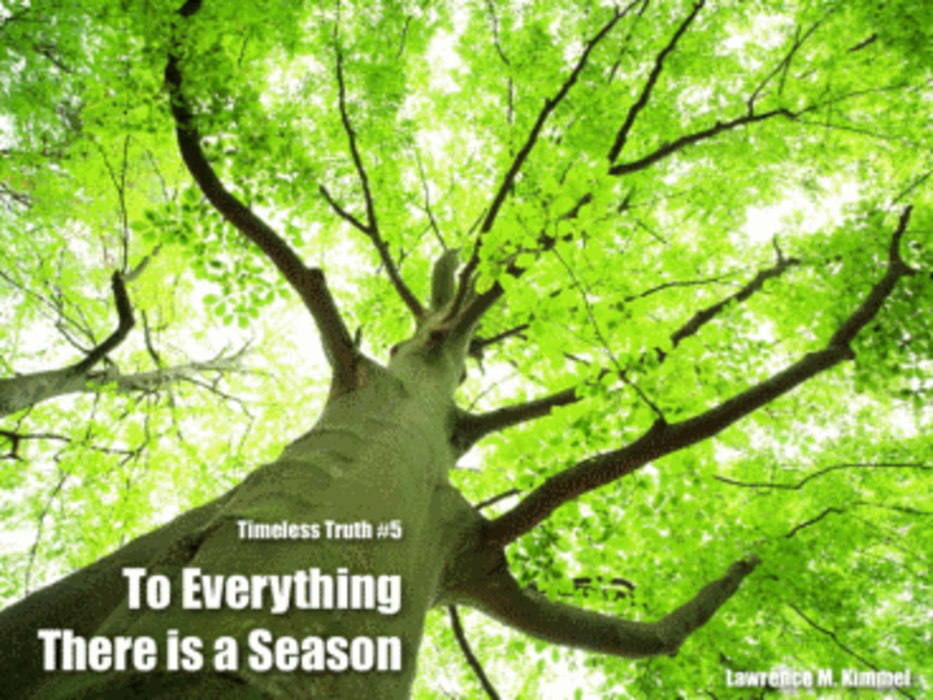When is the best time to Tweet? 5 AM or 5 PM? Which is the best day to post on Facebook? Monday or Saturday? What is the best month to send an email? December or January?
The answer is, all of the above.
In marketing, timing is everything. Or better put, “To everything there is a season.”
In classic scientific marketing we always understood the importance of timing. Yet we based our decisions on generalities. Rainy days were better than sunny days for communication. Weekdays were better than weekends. New movers and new parents were prime targets.
These time-tested truisms still work in many circumstances, but now timing optimization is an exacting science.
Your objective is to find commonalities among your prospects and customers, based on their availability, receptivity, and activity. Your challenge is that the optimal time to communicate differs by channel, category, company, individual, the type of behavior desired, and a host of other factors.
For example, if you want your Twitter followers to share, posting in the United States is great at 1PM. In France, 5AM works well. If you’re a retailer looking to drive sales, posting on Facebook is highly effective on Monday, but if you’re in the entertainment business, Saturday is much more effective.
The best time for The Gap to post on Facebook for its U.S. customers is 9:32AM on Thursdays. But its optimal timing is different on Twitter, and different on Pinterest, and different in other countries—which is all different for Banana Republic.
There have been many fabulous studies, and infographics, on timing optimization. But, not all the results from these studies is exactly the same, which proves the points made above. Yet beyond capitalizing on these insights, it’s helpful to understand some other ways to leverage timing.
Here are 6 critical considerations for timing optimization:
1. The season. Naturally, it’s better to sell winter coats in the winter. But the seasonality for certain products is less obvious. Health clubs and diet plans do great in early January, aligned with New Year’s resolutions. January also works particularly well for many product categories, which seems counterintuitive. Yet media consumption generally goes up in January and therefore online (or remote) shopping can do well. It should also be noted that there are usually some cohorts whose behavior is aberrant. “Snow birds” buy sandals in the winter. Dedicated swimmers buy bathing suits all year long. As such, moving from mass marketing to micro-targeting becomes particularly important in certain situations. You may want to consider which aberrant cohorts can drive the most impact for your business and experiment with ways to reach those cohorts.
2. Daily behavior. An obvious timing opportunity to capitalize on is daily behavior. Many people wake up, eat lunch, and check Facebook at similar times. For this reason, communicating on Friday afternoons—when many people disengage—frequently does poorly. Direct response TV does well in the daytime when distractions (and rates) are generally lower. Online shopping does well at 8 PM when people are home. However, finding the optimal timing is not always simplistic. Daily behavior patterns vary for students, businesspeople, and retirees. Weekend behavior is less consistent. Geography is also a factor. Approximately 48% of the U.S. population lives on the East Coast and 80% live on Eastern Standard and Central Time. As such, if you’ve got a local bakery, timing optimization is easier than if you’ve got a global business and you’re communicating in social media. So here are two questions: Are you aggressively leveraging daily behavior patterns? How can you better align your daily timing and messaging?
3. Celebratory moments. Birthdays, anniversaries, graduations, and holidays can be great marketing moments. The power of recognizing these events should not be underestimated, particularly for your best customers. Yet there are some less obvious moments of celebration that can also be leveraged. For example, the moment someone reaches a new level in a game, or completes a health-related quiz, or a local team wins a big game. Ask yourself: What new celebratory moments would be right for your business?
4. Life events. Obviously, many purchases coalesce around important life events: marriages, births, purchasing a new home, etc. The critical factor here—and with many time-based opportunities—is identifying these prospects quickly, so you can be the first to sell your brand of diapers, dishware, or cable TV subscription. So consider this, what can you do to ensure your current brand advocates recommend your product when their friends or neighbors experience an important life event?
5. Opportunistic events. Campbell Soup used to sponsor the weather report on rainy days. Years ago, we helped a computer virus software company unleash campaigns immediately after a computer virus broke out. Oreo’s use of social media during the Super Bowl electricity outage was a slam dunk, so to speak. To capitalize on opportunistic events, you should be prepared to take advantage of likely, albeit infrequent, events that could impact your business, like weather events, or a political outcome, or a sporting event. Your social media team should also be structured to act fast when unforeseen opportunities arise.
6. Momentary opportunity. These opportunities should be obvious. Someone Googles “ski vacation in Colorado.” Someone visits a car configurator website. A customer standing in a Best Buy store visits Amazon.com. A customer calls your contact center. Ask yourself, is your marketing truly living in the moment? Are there moments when consumers are seeking information that you can better leverage?
You can see that finding the “best time” to communicate is not always an easy question to answer. Yet I can assure you that now is a great time to consider the question.
| Lawrence M. Kimmel is executive director of hawkeye and a frequent keynote speaker at marketing conferences around the world. Follow him @KimmelsCorner. |








